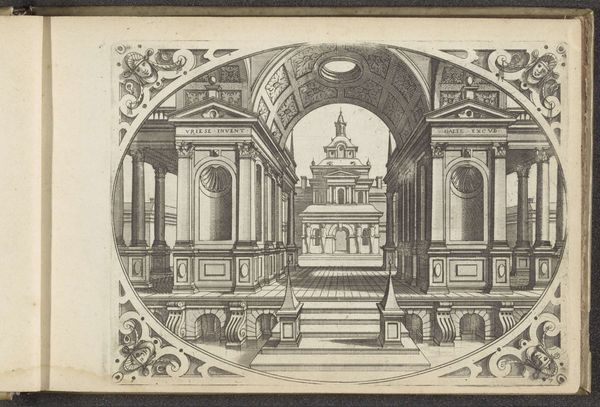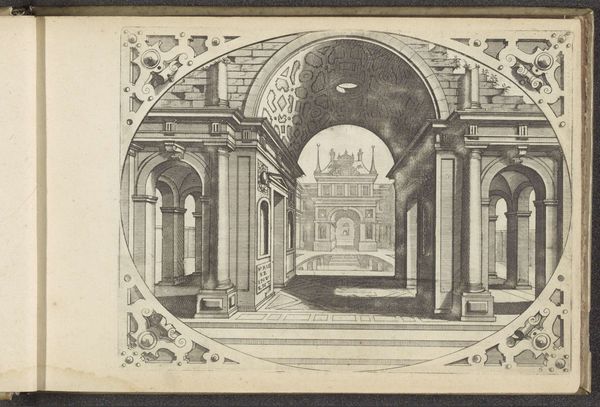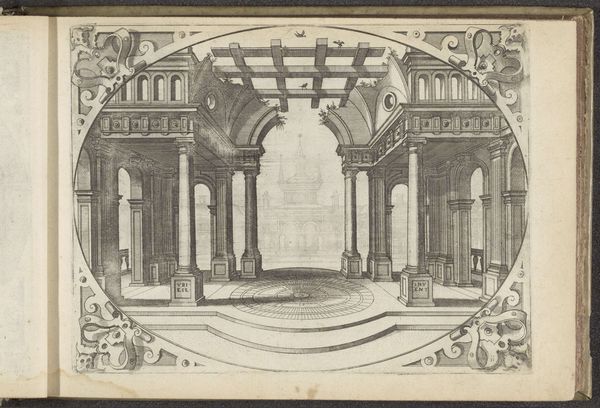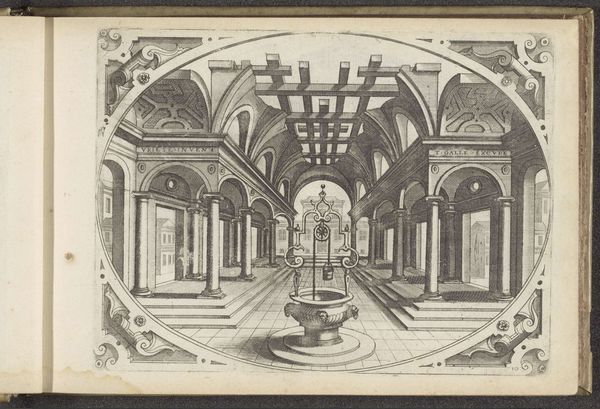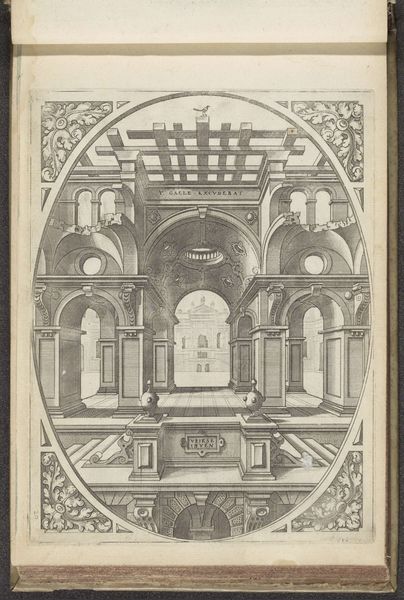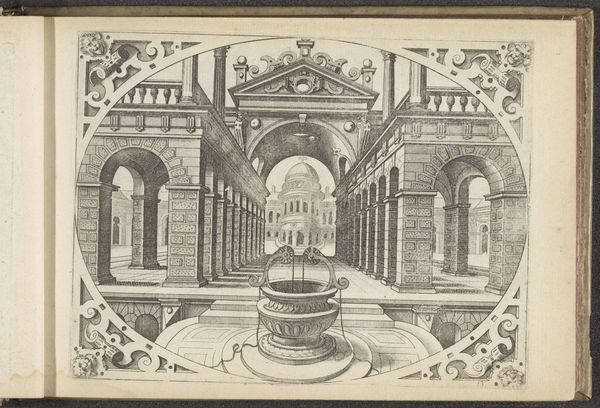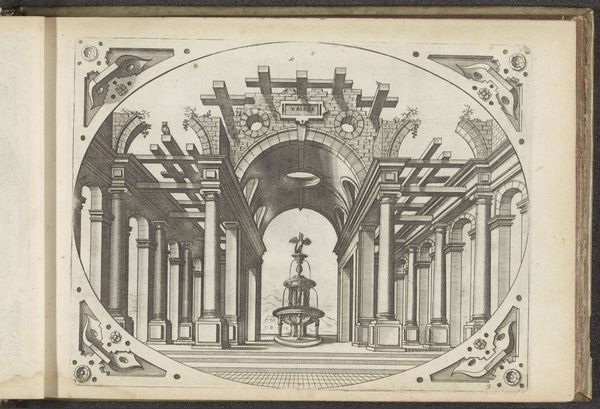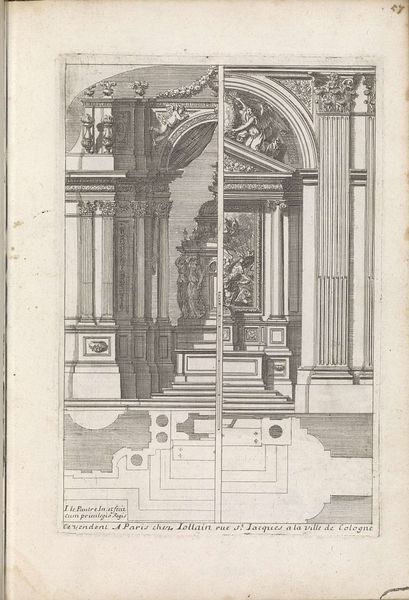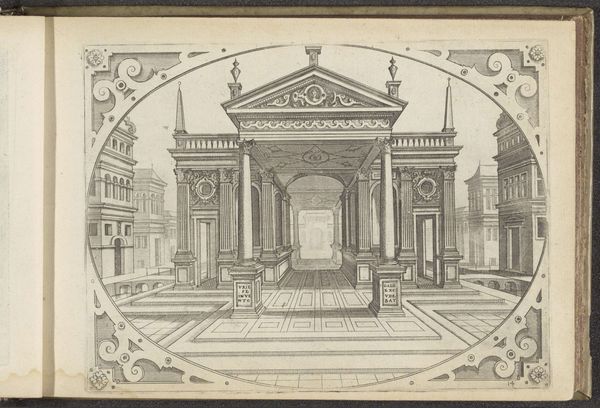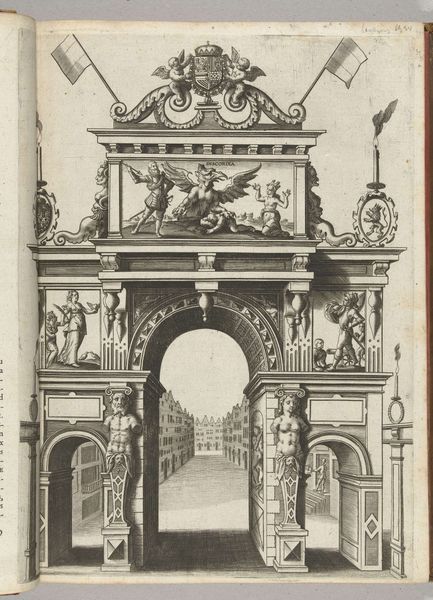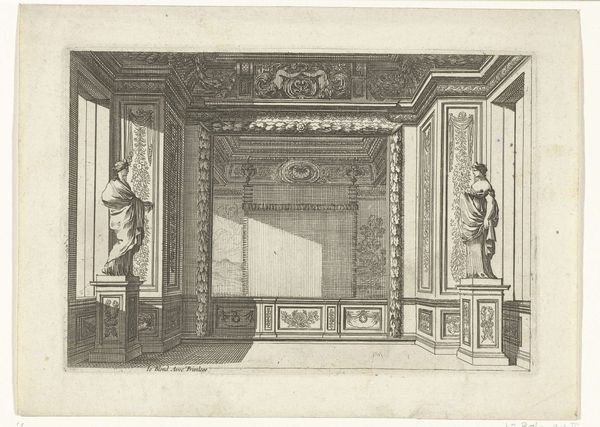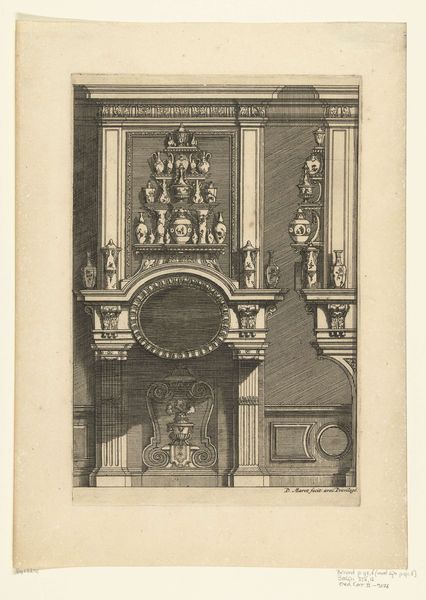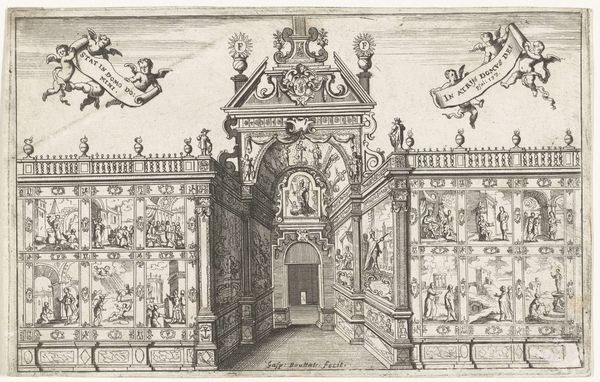
drawing, paper, ink, engraving, architecture
#
drawing
#
aged paper
#
toned paper
#
old engraving style
#
sketch book
#
paper
#
form
#
11_renaissance
#
personal sketchbook
#
ink
#
geometric
#
pen-ink sketch
#
pen and pencil
#
line
#
pen work
#
cityscape
#
sketchbook art
#
engraving
#
pencil art
#
architecture
Dimensions: height 163 mm, width 214 mm
Copyright: Rijks Museum: Open Domain
Editor: So, here we have "Deel van een portaal met vazen in nissen," or "Part of a portal with vases in niches," by Johannes or Lucas van Doetechum, made sometime between 1560 and 1601. It's an ink and engraving drawing on paper. It gives me a very staged and symmetrical impression, almost theatrical. How do you interpret this work? Curator: The theatricality you perceive is spot on! Consider the historical context: the late Renaissance was a time of immense social upheaval, with burgeoning merchant classes seeking to legitimize their power. Architectural prints like this, circulated widely, weren't just about aesthetics; they represented a visual language of status and control. Who has access to these idealized spaces and whose labor builds them? Editor: That’s fascinating! I hadn't thought about the power dynamics inherent in the design itself. Is there something to be said about the recurring shells? Curator: Exactly! Shells, urns, classical motifs - these weren’t accidental choices. They signaled a connection to a glorious, often fictionalized past, intended to resonate with a humanist, classically-educated elite. Who was included and who was explicitly excluded from this vision of order and beauty? Think about the social codes being broadcast. Editor: It really makes you consider the intended audience and the message they were meant to receive. I guess that’s where the idea of control comes into play. Curator: Precisely. It encourages us to decode whose values are being inscribed in these very deliberate representations of space and how these visual languages can normalize hierarchies. It shows how seemingly benign aesthetic choices reflect broader social and political realities. Editor: I’ll definitely be thinking about art as a form of historical and social commentary from now on. Thanks for making me see this piece in an entirely new way.
Comments
No comments
Be the first to comment and join the conversation on the ultimate creative platform.
